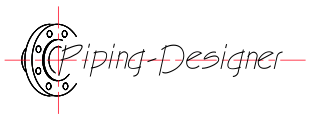Biot–Savart Law
Biot–Savart Law formula |
||
| \( dB \;=\; \dfrac{ \mu_0 }{ 4 \cdot \pi} \cdot \dfrac{ I \cdot dl \;x\; \hat r }{ r^2 } \) | ||
| Symbol | English | Metric |
| \( dB\) = Infinitesimal Magnetic Field at a Point | \(G\) | \(T\) |
| \( \mu_0 \) (Greek symbol mu) = Permeability of the Space | - | \(H\;/\;m\) |
| \( \pi \) = Pi | \(3.141 592 653 ...\) | \(3.141 592 653 ...\) |
| \( I \) = Current on the Conductor | \(A\) | \(A\) |
| \( dl \) = Infinitesimal Length of Vector of the Conductor in the Direction of Current | \(in\) | \(mm\) |
| \(\hat r \) = Unit Vector from the Current Element to the Point of Observation | \(A\) | \(A\) |
| \( r \) = Distance Between the Current Element and the Observation Point | \(in\) | \(mm\) |
| \( x \) = Cross Product (Indicates thea the Direction of dB is Perpendicular to Both dL and r) | \(in^2\) | \(mm^2\) |
Biot–Savart law is a fundamental principle in electromagnetism that describes how a steady electric current produces a magnetic field in the surrounding space. It states that the magnetic field at a given point is directly proportional to the current, the length of the current element, and the sine of the angle between the current element and the line joining the element to the point of observation, while being inversely proportional to the square of the distance between them. Mathematically, it is often expressed in vector form, showing that the direction of the magnetic field is determined by the right-hand rule and is perpendicular to both the current element and the displacement vector. This law is essential in calculating magnetic fields generated by current-carrying wires, loops, and other conductors, and it serves as the basis for deriving Ampère’s law and understanding the relationship between electricity and magnetism.

